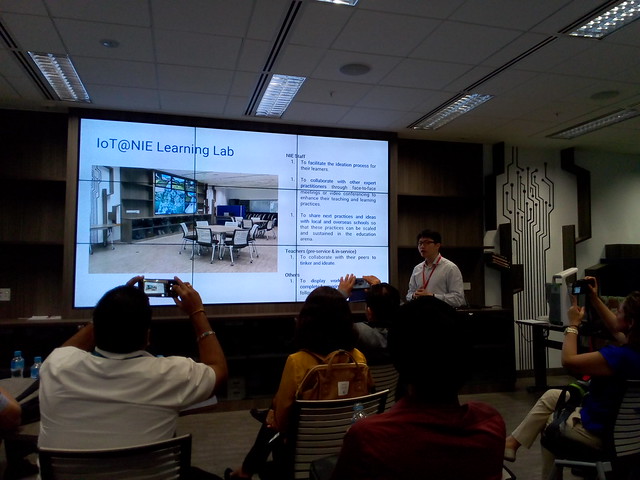Back from a tour of high-tech university campuses in Singapore (at EduTech Asia 2018), I was reading an sales promotion from one vendor on the benefits of a smart campus. However, the smartest classroom I saw in Singapore was the
IoT@NIE Learning Lab at
Nanyang Technological University was smart without having the tech overwhelm the learning.
 |
| Display in IoT@NIE NTU |
The IoT@NIE lab has tables on wheels and screens on the walls. The screens can be plugged into laptop computers on flip up shelves, built into the walls. The beauty of this arrangement is that while the room is intended for teach IoT, there is not too much fixed tech in the room, getting in the way of the learning.
 |
Flip-up shelf for laptop
at IoT@NIE NTU |
Previously desktop computers were provided for students at university. This meant having mains power and data cabling to each desk, requiring the furniture to be fixed in place. But now students can BYOD (Bring Your Own Device) and connect to the campus WiFi, eliminating the cabling to desks. The furniture can be freely moved around and pushed aside. The only fixed devices are attached to the walls and on the instructor's console.
Perhaps we have reached the point where there could be BYOE (Bring Your Own Ethernet). Students would use the wireless Internet on their mobile devices, instead of a campus network. WiFi might still be provided in classrooms, where the network is needed to support the room equipment, or staff might use their own BYOE.


No comments:
Post a Comment